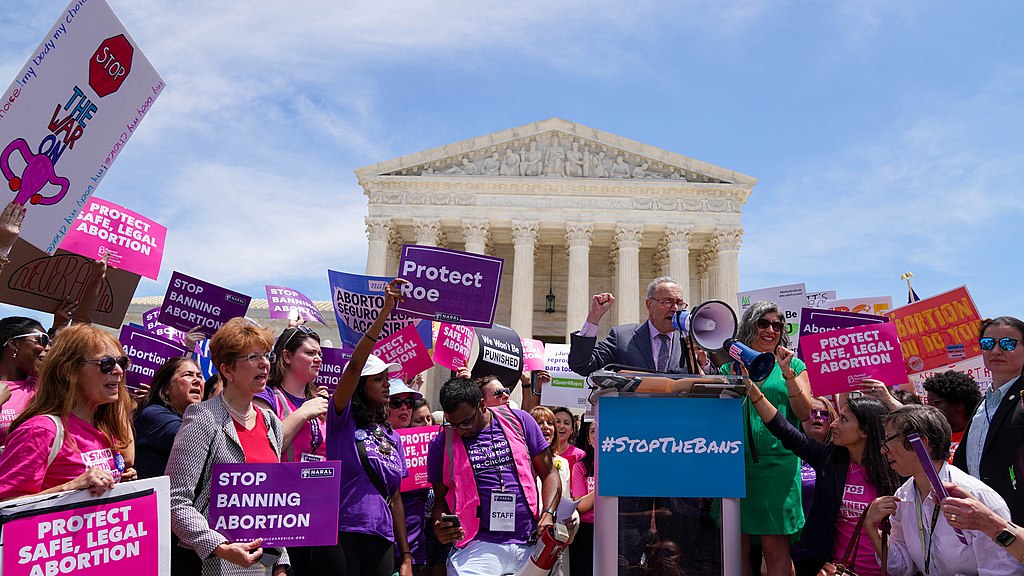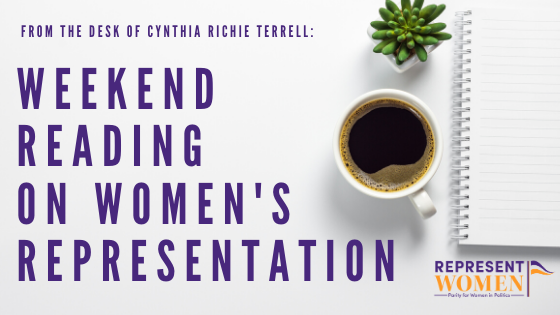
Weekend Reading on Women’s Representation is a compilation of stories about women’s representation in politics, on boards, in sports and entertainment, in judicial offices and in the private sector in the U.S. and around the world—with a little gardening and goodwill mixed in for refreshment!
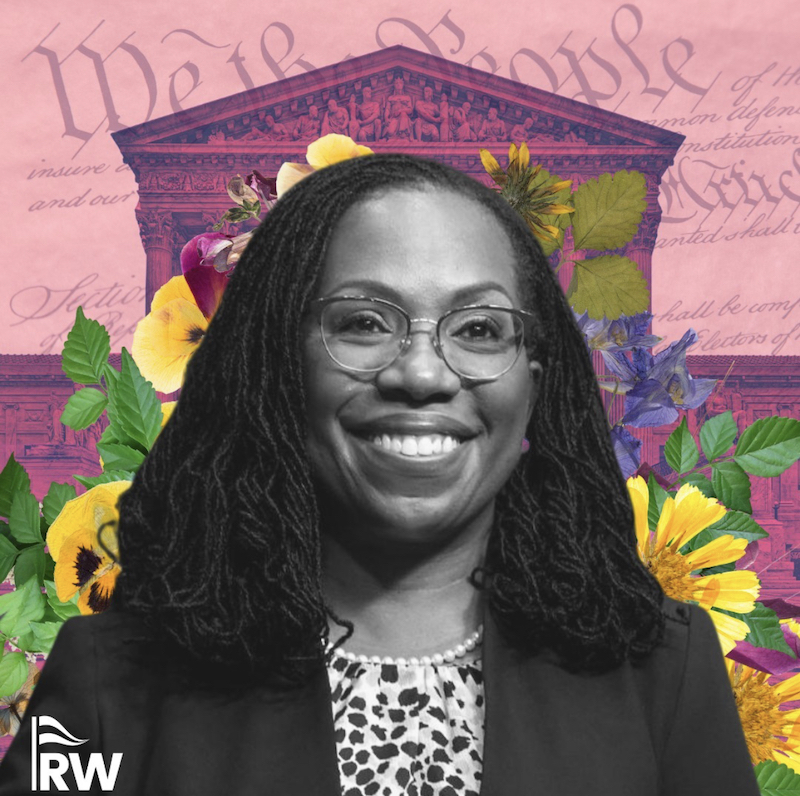
President Joe Biden nominated Judge Ketanji Brown Jackson to serve on the Supreme Court of the United States. If confirmed, Judge Jackson will be the first Black woman on the highest court in the land. According to this piece in The Grio, women leaders from a number of key organizations are featured in a video urging swift confirmation:
The 30-second ad, released on Thursday by liberal advocacy group Demand Justice and exclusively previewed by theGrio, features MoveOn Executive Director Rahna Epting, National Women’s Law Center President and CEO Fatima Goss Graves, Planned Parenthood Federation of America President and CEO Alexis McGill Johnson, Advancement Project Executive Director Judith Browne Dianis and National Education Association President Becky Pringle.
The women leaders joined forces to send a collective message that it is “long past time for the first Black woman Supreme Court justice” and that Brown Jackson is “beyond qualified” for the role. The leaders added that the 51-year-old current district judge is “brilliant and fair” and “applies the law equally.”
“This is an extraordinary moment for our country and for the fight to ensure justice is equal under the law. MoveOn’s members are fired up about confirming the first Black woman Supreme Court justice, and I’m thrilled to join in calling on the Senate to quickly confirm this highly-qualified judge,” Epting, MoveOn’s executive director, said in a statement to theGrio.

There was an insightful article in The Washington Post about the fact that Judge Jackson’s confirmation would bring the Court close to gender balance for the first time in its 233-year history:
Justice Ruth Bader Ginsburg used to lament what she imagined schoolchildren saw when they visited the Supreme Court: “All of these men and one tiny woman.”
After pioneering Justice Sandra Day O’Connor retired and as late as 2009, Ginsburg was that lone female justice. But if President Biden’s Supreme Court nominee Judge Ketanji Brown Jackson is confirmed, it would mean four women would simultaneously serve on the Supreme Court for the first time in its 233-year history, as close to gender parity as possible on the nine-person bench.
That won’t change the court’s ideological direction, and law professors and political scientists continue to debate whether gender significantly affects legal interpretation. But those who welcome the change say it is important for representational reasons, and they assert it could bolster the public’s view of the court’s legitimacy.“It’s remarkable to think that we had to wait until 2022 to get to parity, but it also is something to celebrate as a country,” said Fatima Goss Graves, president and CEO of the National Women’s Law Center. “What we know about the research around institutions generally is that having the number of women that allow parity changes the conversation in the room, changes the perspectives that are raised and I suspect that will be true also for the Supreme Court.”
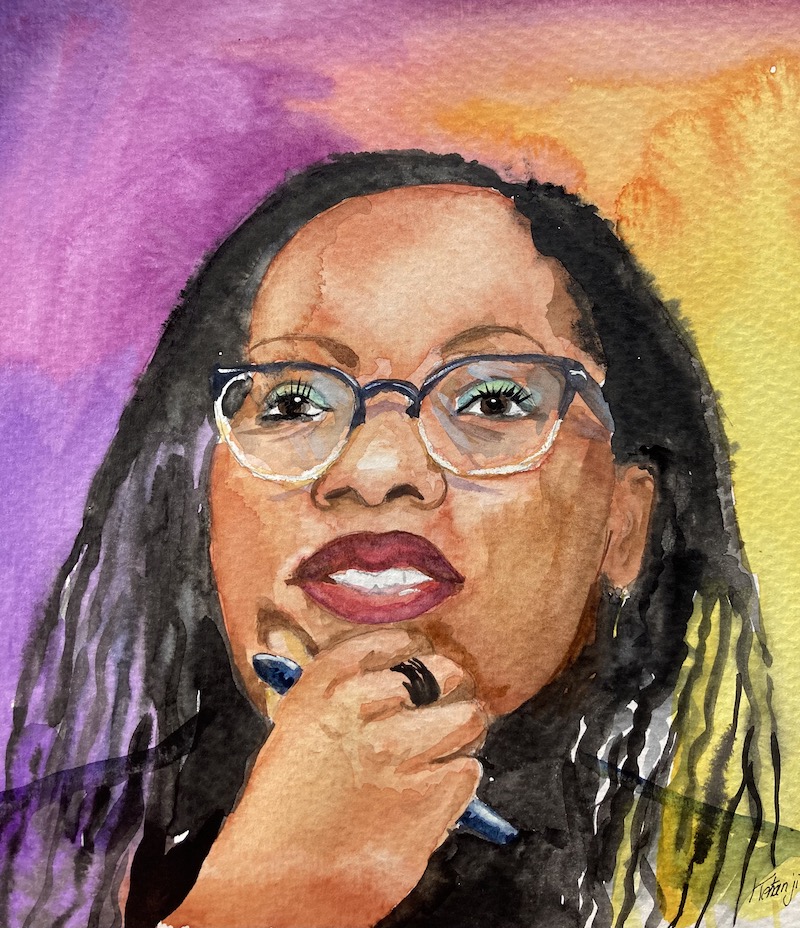
Washington Post columnist Michele Norris wrote a powerful piece about the need to move more quickly to a society where everyone has opportunities to succeed and lead regardless of their race, gender or socio-economic status:
When I learned that President Biden had asked Judge Ketanji Brown Jackson to serve on the Supreme Court, my first instinct was to cheer this historic appointment. But what soon followed was an instinct to dream of the moment when the elevation of such a supremely talented person would be more routine than remarkable.
I hope to see a world where we can stop tossing confetti when 232-year-old institutions include women, people with brown skin, those who are differently abled, those who are LGBTQ or those who have been locked out for centuries.
I hope to see a world where braids and passion twists or kinky, curly, fuzzy, nappy, “grow as God gave me” hairstyles are as common as side-part, soft-fade, executive haircuts in CEO suites and anywhere people exert influence over life, learning, longevity and the engines of our economies.
I hope to see a world where names like Ketanji and Kamala and Kizzmekia roll off the tongue as easily as Ashok, Xiomara or Eun-Woo. A world where more National Football League coaches have names such as Kwame and Francisco. A world where college students do not feel like they must Anglicize their names so their résumés don’t go straight to the piles labeled “not ready” or “not sure” or “not now.”
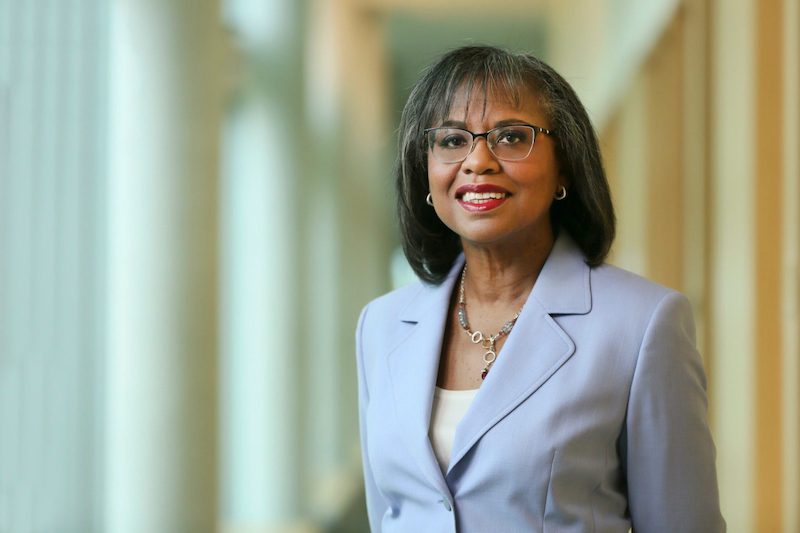
Anita Hill, who became a household name when she accused current Supreme Court Justice Clarence Thomas of sexual harassment, wrote about the value of having Judge Jackson’s perspective on the Supreme Court:
With this announcement, every girl and young woman can hold their heads higher and with more confidence. Jackson’s achievement can be the example of the seemingly improbable becoming the possible that changes the way they think about their own potential. Jackson said that she hoped to inspire all young girls. And former President Barack Obama assured her that she had when he tweeted that the nominee had “already inspired young Black women like my daughters to set their sights higher.”
And Jackson has inspired a generation of young girls and made a generation who came before her proud. During the press conference announcing her nomination, Jackson named Judge Constance Baker Motley, the first Black woman to be named to a federal court, as someone who inspired her. And Motley, along with a list of BIPOC women my age and older, judges, legal scholars, and attorneys who paved the way for this historic moment, this day is for you. To our mothers, aunts, teachers and friends, who because of family, financial or legal constraints could not go to law school, but who, like my own mother, made sure that we could have a career in the legal profession, this moment is for you too. Through this appointment we have all become more visible knowing that our struggles were not in vain.
In our celebration, we should recognize that influence on the law itself must be one of the benefits of having a Black woman on our country’s highest court. Since Supreme Court justices routinely discuss cases in conferences, Jackson’s participation in the Court’s deliberations is one way to think about how she might have a particular sway. For example, Justice Sandra Day O’Connor had written about how Justice Thurgood Marshall “profoundly influenced” her. For O’Connor, Marshall’s storytelling in meetings with his colleagues demonstrated “the human impact of the law” and counterbalanced judges’ tendency to view the law as abstract. If confirmed, I can only imagine that Jackson’s presence in the chambers of the Supreme Court will inspire deeper intersectional thinking about the power that the Court’s decisions have over people’s lives. In turn, this perspective just may change the justices’ thinking.

Vote Run Lead released a series of excellent graphics this week that illustrate the under-representation of Black women in state legislatures:
19 STATES HAVE ZERO BLACK WOMEN IN THE STATE SENATE
Black women’s political participation keeps our democracy thriving. However, Black women face unique barriers to running and winning, but remain one of the country’s most powerful voting blocs.
We need more Black women in the state senate, where issues from jobs to voting rights to women’s health are being legislated. We must support and call more Black women into our statehouses.
Today my sister voted for the first time. She is one of my biggest inspirations & reasons why I am in this fight. An immigrant herself, who has now cast her vote for her sister for U.S. Congress.
— Jessica Cisneros (@JCisnerosTX) March 1, 2022
Thank you for always being one of my biggest supporters, Claudia. Juntas siempre!! pic.twitter.com/A6Ez6Y6lM7
Texas held primary elections this week for state and federal offices—a number of contests will be decided in a runoff election in May, including the high profile race in District 28, because no candidate won more than 50% of the vote. Ranked-choice voting would eliminate the need for this costly second round and avoid the steep decline in turnout that is expected, as David Meyers writes in The Fulcrum:
Texas kicked off the 2022 primary season on Tuesday and, as expected, multiple high-profile races are headed to runoff elections. But the state could have saved millions of dollars by switching to an alternative system known as ranked-choice voting, according to a new analysis.
The Lone Star State requires candidates to receive a majority of the primary vote in order to advance to a general election. And when more than two candidates seek a nomination, it becomes possible no one will reach that threshold in one round of voting. That’s what happened this week in races for attorney general, lieutenant governor and a handful of U.S. House races.
But if Texas used ranked-choice voting, also known as instant runoff, there would be no need to spend millions on an extra round of voting, when turnout historically drops dramatically, say the RCV backers.
Women in Wyoming are objecting to a number of bills in the legislature that would undermine women’s equality and well-being, according to this story in the Wyoming Business Report:
Silently, and without revealing their identities, four women approached the Capitol at sunset Tuesday. They were dressed in red robes and white wimples.
A flyer for the event said it was a “Handmaid’s Protest” and listed no organizer. This was intended to be “anonymous for fear of retribution.”
The women stood without speaking to bring attention to the “very real consequences for Wyoming women due to the legislative bills that have passed in recent years and could pass the Wyoming Legislature in the next two weeks.”
Restrictions on women are real, the protesters argued in writing, and are not simply a fictional feature of a popular Hulu video streaming series. The program is based on the 1985 dystopian novel “The Handmaid’s Tale” by Margaret Atwood.
“We want to show the legislators that we fully understand the world they are trying to create with this legislation. Rather than continue the legacy of the Equality State, they are taking their cues from the fictional land of Gilead,” one organizer said.
Bryce Covert has released a fascinating report on the California law that requires companies to appoint women to their corporate boards that offers some great insights for how to advance women’s representation in politics:
Four years ago, California embarked on an ambitious experiment to enforce a long-held goal of many business leaders and women’s advocates: Get more women on corporate boards. In a world where many developed countries have neared gender parity in the boardroom, including France, Norway, and Sweden, the United States has remained stubbornly behind, with women holding only about a quarter of board seats. As a result, high-powered women miss out on the high compensation, experience and networks these boards provide.
Male executives and shareholders have long protested that they can’t possibly find enough qualified women to diversify their boards. Now, four years later, California’s experiment has quietly proved them wrong: They can, and in fact will, find qualified women if given a strong nudge. Contrary to the concerns of many executives before the law went into effect, the California law shows that they will find women who are just as qualified as men, suggesting that the real hurdle to gender diversity came down, at least in many cases, to a lack of effort. And once those women arrive, they make finding more women easier — which, studies show, will bring their firms higher productivity and performance thanks to the robust debate and fresh ideas coming from their boards.In terms of its stated goal of increasing gender diversity in the boardroom, the law has been an unqualified success. By the end of 2019, when all public companies with executive offices in California had to have at least one woman on their boards per the law, virtually all of them had complied: 99.3 percent met the deadline. That’s “basically universal,” said Daniel Greene, assistant professor of finance at Clemson University who has analyzed the data. Before the mandate, 29 percent of public companies in the state had all-male boards; by the end of 2019, just five companies did. And California firms acted quickly, given that the law had passed just a year earlier.
The share of female board directors in California grew from 14.6 percent in 2018 to 32.1 percent by the end of last year. In the United States as a whole during the same period, on the other hand, the share of women on boards at companies in the Russell 3000, which tracks the 3,000 largest public companies, moved from 17.7 percent to 25.6 percent. “California started at less than the average and now they’re way more,” Greene noted.
There was an interesting research brief on the correlation between civic engagement and women on local corporate boards that bolsters the argument that women play an important role in the process of local decision-making:
U.S. counties where people are more likely to vote and engage in professional and social associations tend to have more women on the boards of local corporations, according to our new peer-reviewed study. Moreover, we found that women in these communities are more likely to be appointed as chairs of influential board committees.
To reach these conclusions, we studied nearly 3,000 publicly listed U.S. companies, representing more than 90% of stock market equity. For each company, we collected financial data from 2000 to 2018 on company size, growth, risk and performance, as well as details on the composition of their board of directors, such as their size and the percentage of female members.
Our data showed that while the overall share of women on corporate boards is very low, there is considerable variation across the U.S. In 2018, a quarter of companies in our database didn’t have a single female board member, and just under 100 had at least as many women as men on boards.



Over 45 women will be speaking next week at RepresentWomen’s Democracy Solutions Summit about the pressing issues facing our nation including election administration, campaign finance, voting rights, the Electoral College, ranked choice voting, redistricting, and the Fair Representation Act. Each day will end with a session devoted to how to get involved and take action!
I am excited to hear from so many incredible women experts and advocates—I do hope that you will join us for this important conversation about the building blocks for a 21st century democracy—register here!
I hope to see you at the Summit next week!
Cynthia
P.S. Check out RepresentWomen’s Women’s History Month playlist!




